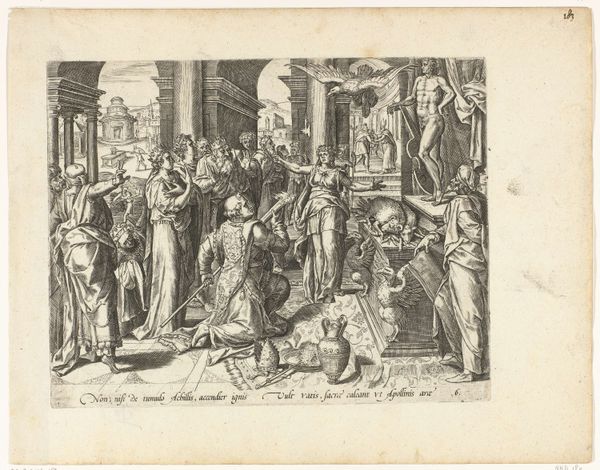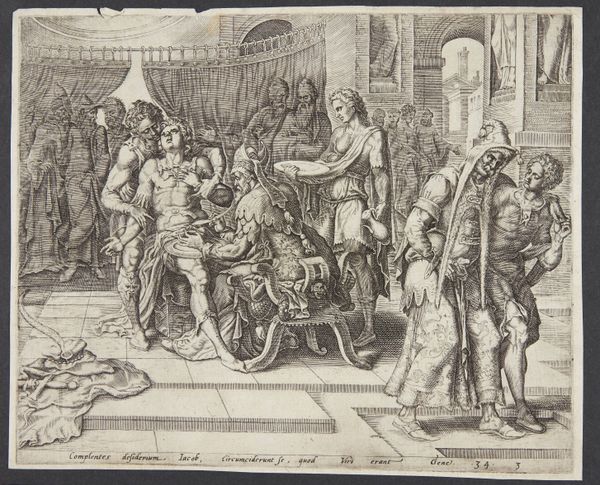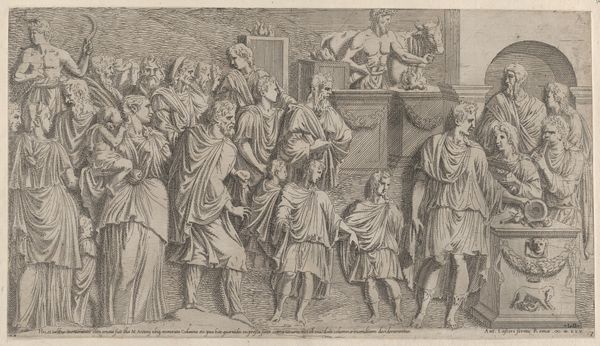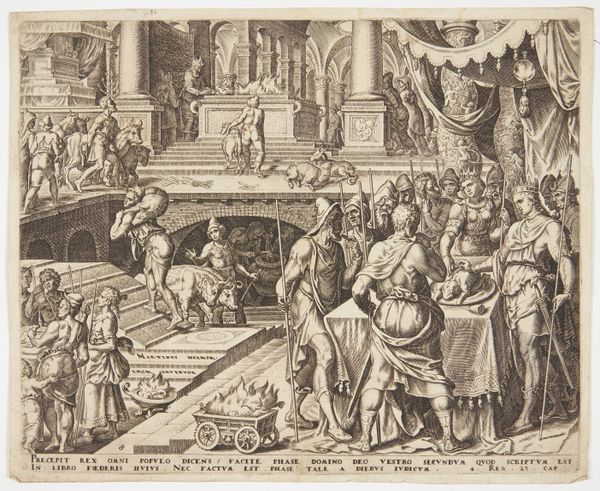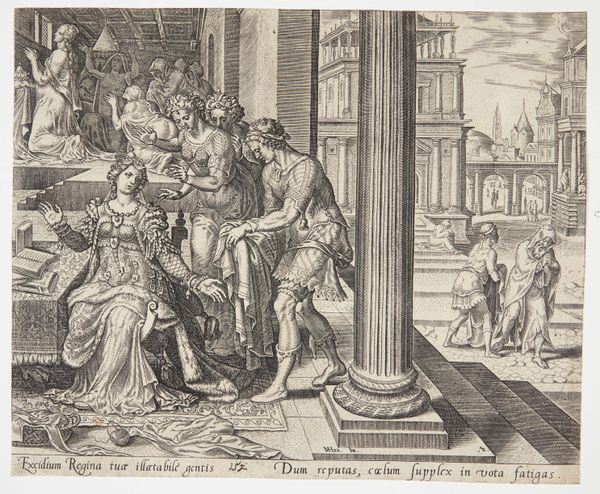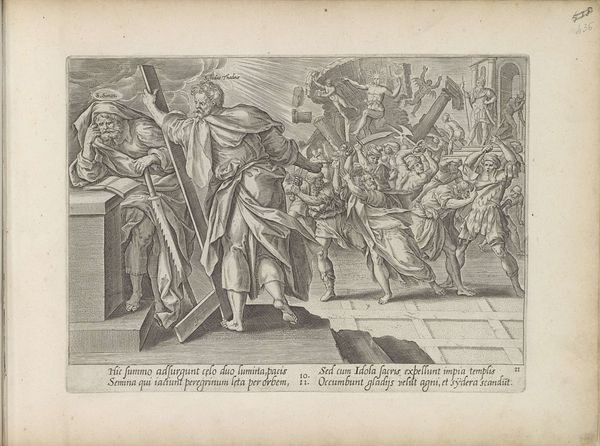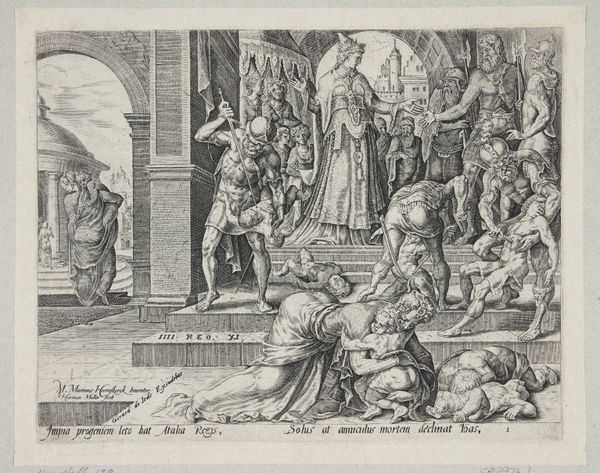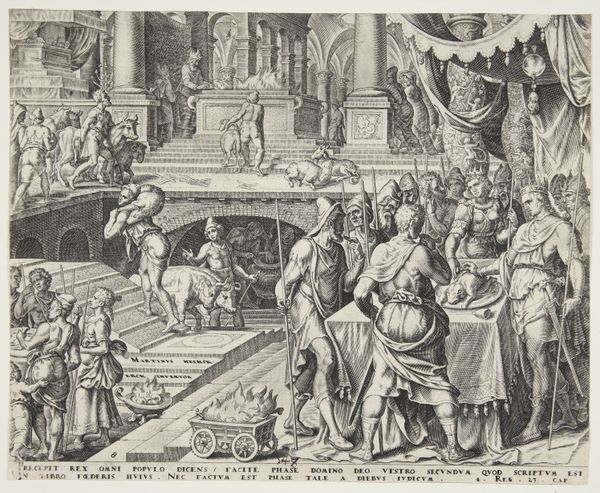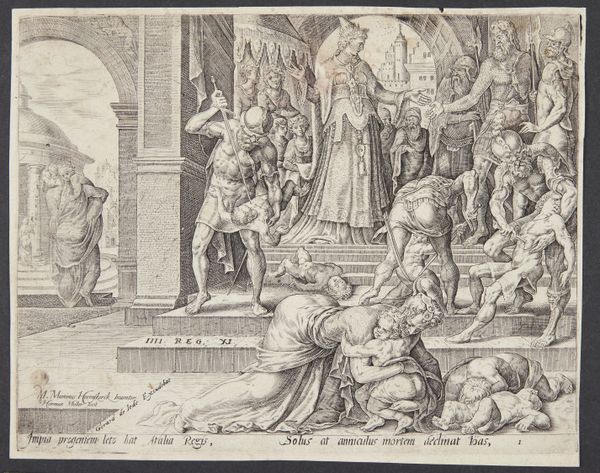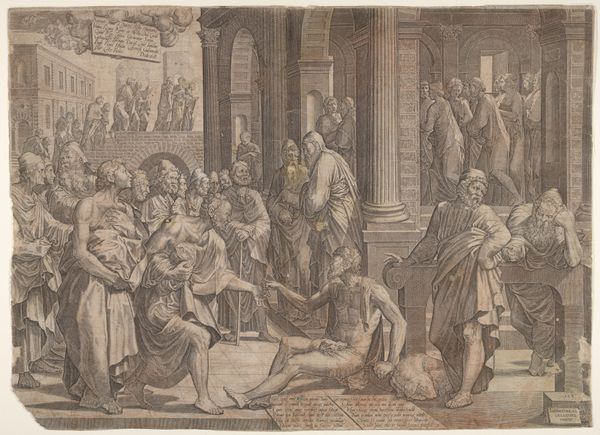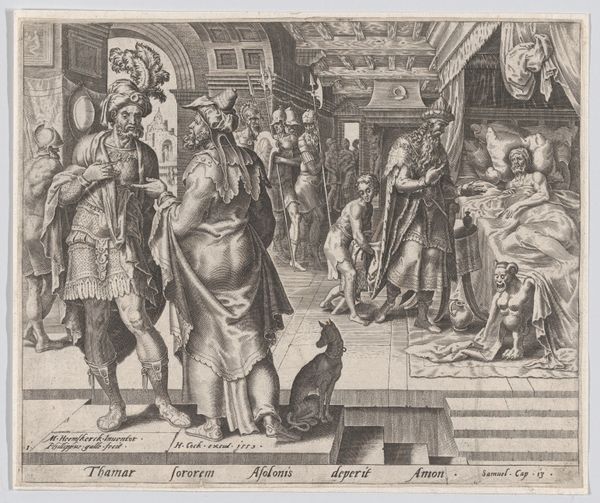
print, etching, engraving
# print
#
etching
#
mannerism
#
figuration
#
history-painting
#
engraving
Dimensions: 202 mm (height) x 247 mm (width) (plademaal)
Editor: Here we have "Daniel Revealing the Fraud of Bel's Priests," a 1565 engraving by Philips Galle. There's so much happening in this detailed scene; it feels almost chaotic, but with a clear story being told. What do you make of all the symbolism packed into this piece? Curator: It's indeed a dense visual narrative, isn't it? What strikes me is how Galle uses symbolism to depict the clash between faith and deception. Note the idol of Bel enthroned, laden with offerings, a potent symbol of misplaced trust. Daniel, by contrast, exposes the priests' trickery— footprints on the floor show how they entered through a hidden door to consume the offerings! Consider how cultural memory operates here, recalling the Old Testament story where Daniel uses his wisdom and devotion to reveal falsehoods. This becomes an emblem of resistance against corruption and religious manipulation, reflecting societal concerns during the Reformation. What emotions do you think Galle aims to evoke in the viewer through these stark contrasts? Editor: I guess he wanted to instill a sense of moral outrage, maybe even inspire viewers to question authority figures in their own lives. So, would that reading be in line with the intended cultural context of the print? Curator: Precisely. Galle taps into a pre-existing reservoir of distrust towards corrupt religious institutions, providing a visual articulation of those feelings, anxieties, and hopes for reform through an instantly recognisable biblical narrative. Editor: It’s fascinating how a single image can condense so many complex ideas about belief and power! I’m definitely going to look into more of Galle’s engravings. Curator: Agreed. This print serves as a potent reminder that images carry immense cultural weight, shaping our perceptions and informing collective memory across generations.
Comments
No comments
Be the first to comment and join the conversation on the ultimate creative platform.
